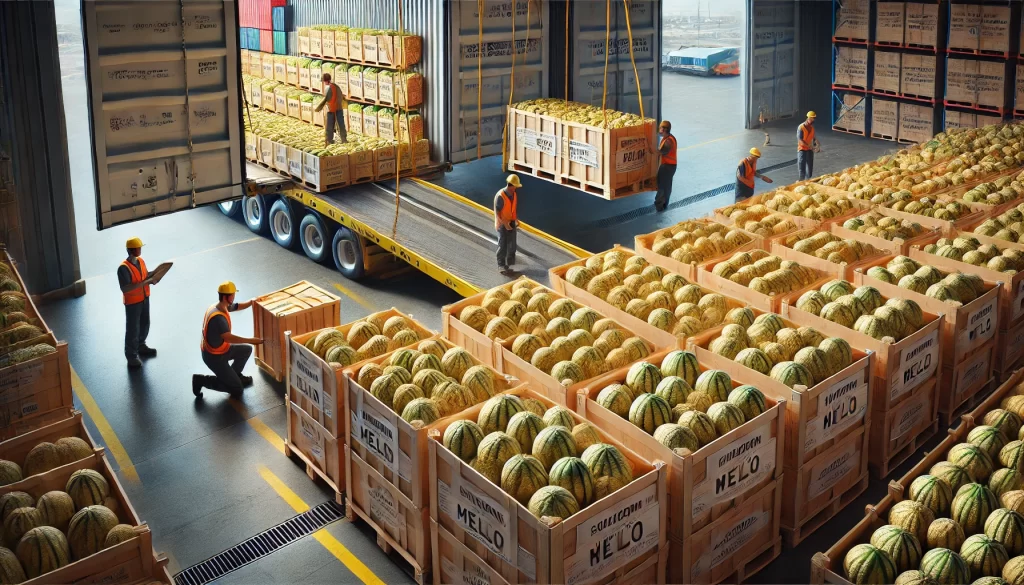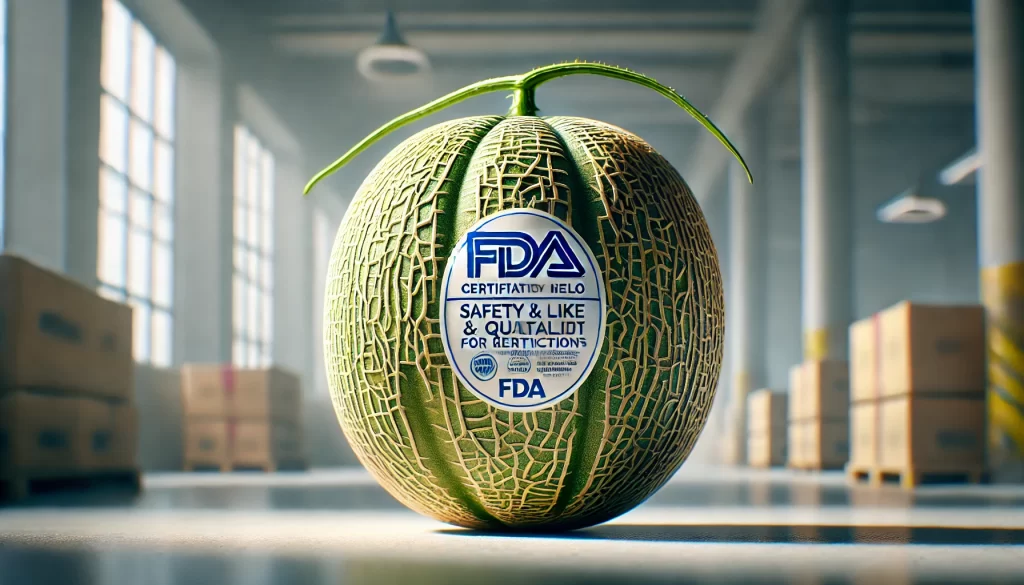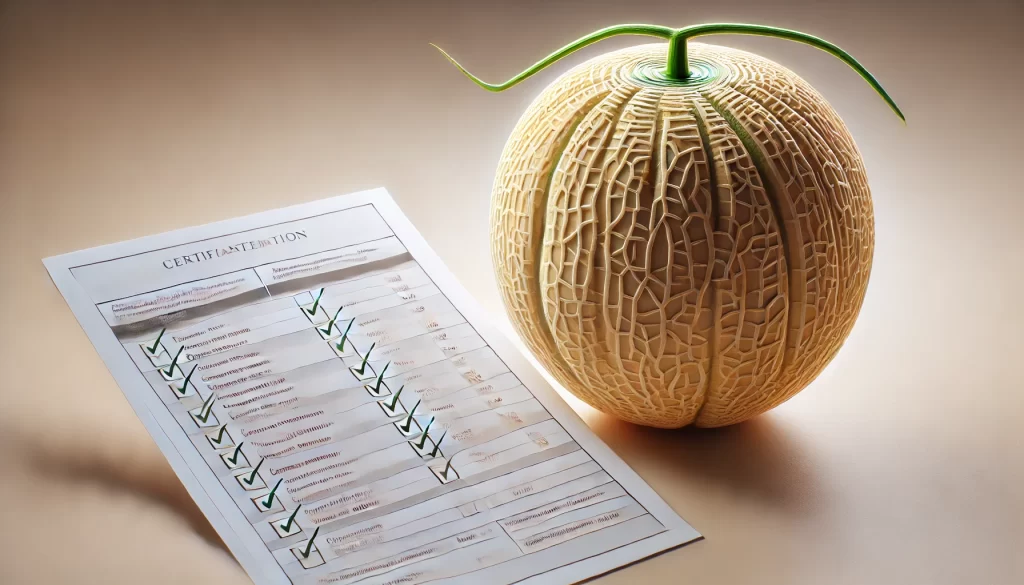Exporting melons requires meticulous planning and adherence to international standards to ensure that the fruit arrives in optimal condition to the global market. From selecting varieties to packaging and complying with phytosanitary regulations, each stage is crucial for the success of the export. In this article, we detail the essential practices and strategies for preparing your melon production for export, ensuring quality, safety, and competitiveness.

Variety Selection and Product Quality
Varieties Adapted to the Market
- Quality and Demand: Select varieties that meet the taste, texture, durability, and appearance requirements demanded by destination markets.
- International Standards: Some varieties are preferred in certain countries for their resistance to damage during transportation and their long shelf life.
Quality Control in the Field
- Good Agricultural Practices: Implement practices such as integrated pest and disease management, balanced fertilization, and adequate irrigation to produce melons of high quality standards.
- Certifications: Obtaining certifications for good agricultural practices (GAP) and organic certifications can open doors to premium markets.

Postharvest Preparation for Export
Sorting and Selection
- Fruit Sorting: Sort melons by size, weight, color, and quality to meet export standards.
- Quality Inspection: Perform quality checks to identify damages, diseases, or imperfections that could affect the value in the international market.
Packaging and Wrapping
Proper packaging protects melons during transport and facilitates their presentation in the destination market.

| Aspect | Recommendation | Benefits |
|---|---|---|
| Packaging Material | Use ventilated cardboard boxes and protective pads | Protection from impacts and skin damage |
| Primary Packaging | Polyethylene wraps, edible coatings | Minimizes moisture loss |
| Labeling | Clear information about origin, variety, and handling | Facilitates traceability and regulatory compliance |
Storage and Transport Conditions Control
- Cold Chain: Maintain constant temperatures (7°C-10°C) during storage and transport to preserve freshness.
- Humidity and Ventilation: Control relative humidity and ensure good ventilation to prevent mold and deterioration.
- Refrigerated Transport: Use refrigerated containers and trucks to maintain optimal conditions during international shipping.
Compliance with Standards and Documentation
Phytosanitary Requirements
- Sanitary Certificates: Obtain phytosanitary certificates to guarantee that melons are free from pests and diseases.
- Inspections and Quarantine: Comply with the inspections and quarantine periods required by the importing country to avoid rejections.
Export Documentation
- Commercial Invoices, Packing Lists, and Certificates of Origin: Prepare all necessary documentation that supports the quality and legality of the export.
- Labeling Regulations: Ensure that labels comply with the destination country’s regulations, including nutritional information and handling instructions.

Market Strategies and Commercialization
Market Research
- Demand Study: Analyze trends and consumer preferences in the destination market to adapt the melon offering.
- Competition: Understand the competition and differentiate through quality, certifications, and unique packaging.
Partnerships and Distribution
- Logistical Partners: Collaborate with exporters, customs agents, and logistics companies specializing in perishable products.
- Distribution Networks: Establish efficient distribution channels in the destination market to ensure timely delivery to the end consumer.
Conclusion
Preparing your melon production for export involves everything from selecting the right variety and maintaining high-quality standards in the field to implementing postharvest practices, packaging, compliance with regulations, and market strategies. By adopting a comprehensive approach and meeting international requirements, producers can successfully enter new markets, increase their revenue, and strengthen their brand reputation.
References
- Kader, A.A. (2005). Postharvest Technology of Horticultural Crops. University of California Agriculture and Natural Resources.
- FAO. (2017). “Standards for International Trade of Fruits and Vegetables.” FAO Plant Production and Protection Paper.
- Ramos, M.J., & Ortiz, J.P. (2019). “Quality Management in Exporting Fresh Fruits: A Case Study on Melon Exports.” International Journal of Food Science and Technology, 54(6), 2001-2010.
 AgronoBlog – Agriculture Blog
AgronoBlog – Agriculture Blog 


